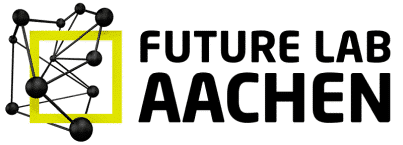The DLR location Jülich is now home to the world’s largest artificial sun. Together, 149 high-performance lamps can generate many times the intensity of solar radiation.
The world’s largest artificial sun has been shining in Jülich since 23rd March 2017. In the three-storey Synlight building of the German Aerospace Center (DLR), a total of 149 Xenon short-arc lamps are ready to shine. The DLR scientists can focus all these radiators on a tiny target area of just 20 x 20 cm. When the light from the array of lamps with its cumulative power of 350 kilowatts hits that spot, it has up to 10,000 times the intensity of normal solar radiation hitting the Earth’s surface. Temperatures of up to 3,000 degrees Celsius can be reached at the focal point. Researchers are going to using these temperatures to produce fuels like, for example, hydrogen.
Hydrogen is seen as the definitive fuel of the future because it burns without producing carbon dioxide. But huge amounts of energy are required to produce hydrogen by splitting water – a readily available raw material all over the world – into its constituents hydrogen and oxygen. This energy can be obtained from the sun. “Renewable energies will be the backbone of global power supplies in the future,” says DLR Executive Board Member Prof. Dr. Karsten Lemmer, emphasising the importance of intensive research into alternative energy production. “Solar power produced fuels, propellants and combustibles have a huge potential for long-term energy storage, for the production of chemical raw materials, and for reduction of carbon dioxide emissions. Synlight will give a significant boost to our research in this field.”
Spells of bad weather? Who cares!
Natural sunshine in central Europe is infamously unreliable, so an artificial sun is a much better option for development solar fuel production methods. During Synlight experiments, spells of bad weather and fluctuating daylight hours outside simply can’t impact the tests and their evaluation. In addition, Jülich also has a whole infrastructure to offer, including the Jülich solar tower and a scientific environment – ideal conditions for innovative advances in solar technology. The idea of moving research facilities to sunnier regions might seem attractive at first glance, but it is not really a viable option. Even in those regions there is no guarantee that the sun will always shine with the same intensity. And yet that is exactly what is needed for fast innovation cycles: consistent test conditions that can be quickly and precisely reproduced.
Facts and figures:
The DLR Institute of Solar Research set up the research facility during the last two years in a building constructed by the Jülich Research Centre (Forschungszentrum Jülich; FZJ) which it has rented long-term for the operation of Synlight. The State of Norh Rhine-Westphalia funded the project to the tune of 2.4 million euros, around 70% of the total funding requirement of 3.5 miillion euros. The remaining 1.1 million euros was supplied by the Federal Minstry for Economic Affairs and Energy (BMWi).



